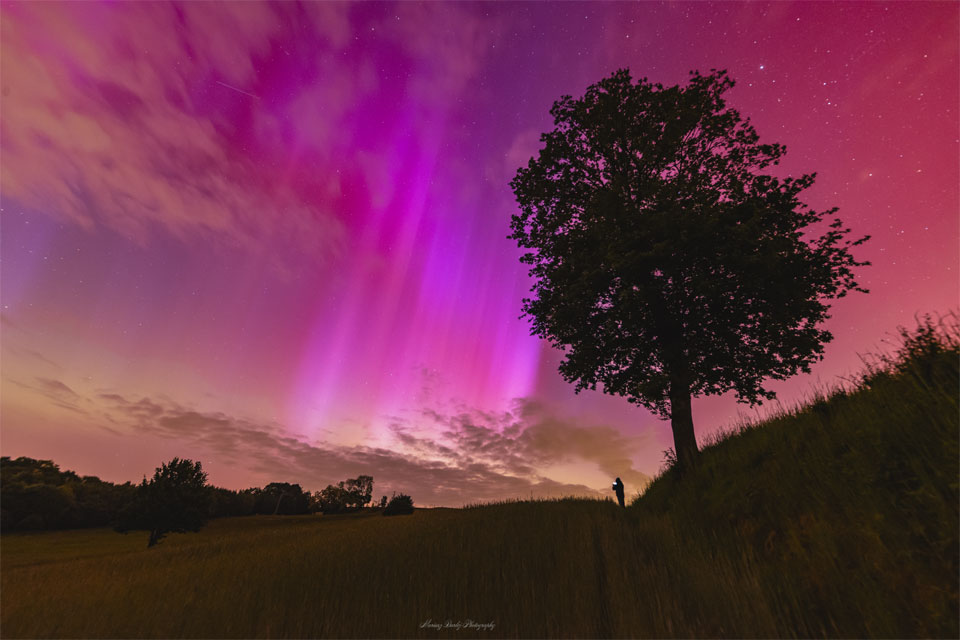
Solar storm – not HAARP – creates intense auroral display
Night skies over the weekend erupted with vivid colors and awed people all around the globe as the solar wind from a severe geomagnetic storm produced by our sun entered Earth’s upper atmosphere and created auroral displays. The sun's activity was closely monitored and the storm's effects reported multiple times over the weekend by the National Oceanic and Atmospheric Administration’s Space Weather Prediction Center. NOAA predicted such a storm and has been preparing scientists for the event.
The spectacular aurora sparked questions about possible connections to recent experiments by the High-frequency Active Auroral Research Program, or HAARP. While HAARP did operate a scientific campaign May 8-10, it had no connection to the solar storm, according to Jessica Matthews, HAARP director. The campaign supported research proposals from the University of Alaska Fairbanks to study mechanisms for the detection of orbiting space debris.
“We have been responding to many inquiries from the media and the public,” Matthews said. “The HAARP scientific experiments were in no way linked to the solar storm or high auroral activity seen around the globe.”
The May HAARP campaign was scheduled about a month and a half before the geomagnetic storm. The timing was purely coincidental; geomagnetic storms are unpredictable, with lead times before a solar event is detected from Earth measured in minutes, not months.
The sun constantly sheds solar material into space – both in a steady flow known as the “solar wind,” and in shorter, more energetic bursts from solar eruptions. The impacts of these magnetic storms can range from mild to extreme, but in a world increasingly dependent on technology, their effects are growing ever more disruptive. Researchers are exploring ways to increase the amount of warning before a solar storm reaches Earth.
More information about this weekend's solar storm and HAARP activity is available here. An extensive FAQ document about HAARP is available here. Find more information on space debris and the May 8-10 HAARP campaign here. You can learn more about space weather and its effects at www.swpc.noaa.gov/.
Rebecca Lindsey, University of Alaska Fairbanks Geophysical Institute Public Information Office, 907-474-6472, rllindsey@alaska.edu
Don Hampton, University of Alaska Fairbanks Geophysical Institute, Optical Science Manager, dhampton@alaska.edu
Jessica Matthews, University of Alaska Fairbanks Geophysical Institute, HAARP Manager, jamatthews02@alaska.edu





